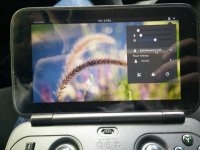I have a great update!
Continuing with my investigation I found that using the following BIOS setting
Chipset Tab -> North Bridge -> Memory Configuration -> DRAM PM5 -> Disabled
the system seems to be rock solid even with memory set at 1600MHz Fast.
So, with Memory set at 1600MHz Fast and PM5 disabled I have
1) 3DMark IceStorm stable regardless of power source (battery and AC) and Intel Driver “Extended Battery Life for Gaming” mode
2) Geekbench 4 stable
I even tried to run 3DMark and Geekbench at the same time with no problems.
So it seems that disabling DRAM PM5 leads to a perfect stable system regardless of Windows/drivers settings.
This DRAM PM5 parameter is poorly documented (the BIOS states “Enable or disable DRAM PM5 PUNIT configuration.”), but digging around PM5 seems to be an advanced power saving mode for DRAM. My hypothesis is that, disabling this parameter, the system uses higher voltages for the DDR3LP memories (or, for the sake of precision, the system avoids lower voltages for the memories) avoiding possible instability at 1600MHz. After all, when we overclock CPUs, GPUs and RAMs, we obtain stability using higher voltages. The hypothesis is compatible with the observed correlation between crashes and Intel "Extended Battery Life for Gaming" parameter: it is possible that, in this mode, all power saving technologies kick in frequently, leading to lower voltage and instability.
It would be interesting to determine if disabling “DRAM PM5” resolves the driver freezes (not the total crashes like mine) and, in general, makes the GPD WIN more (or totally) stable.
Best regards
Locutus73





